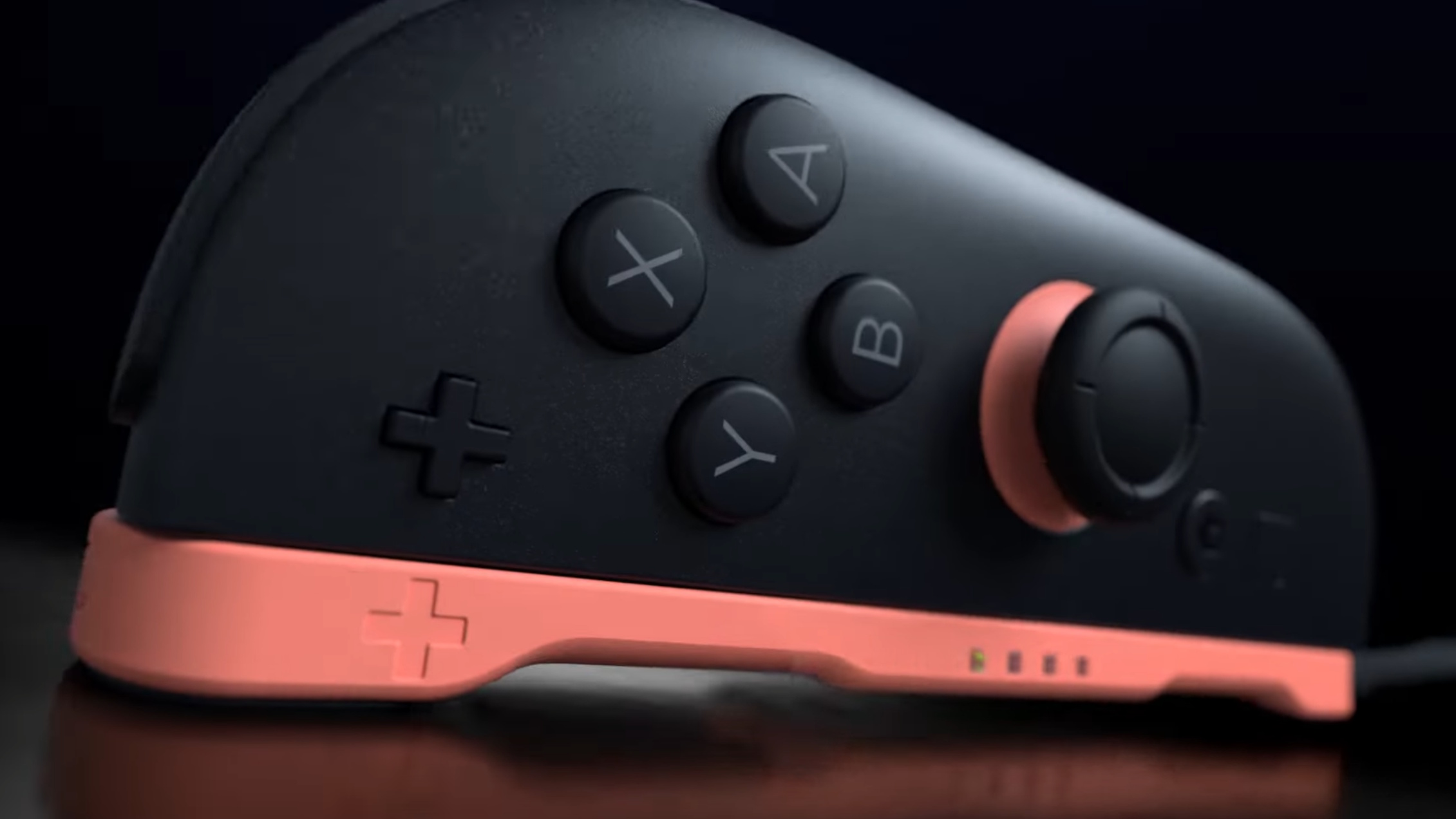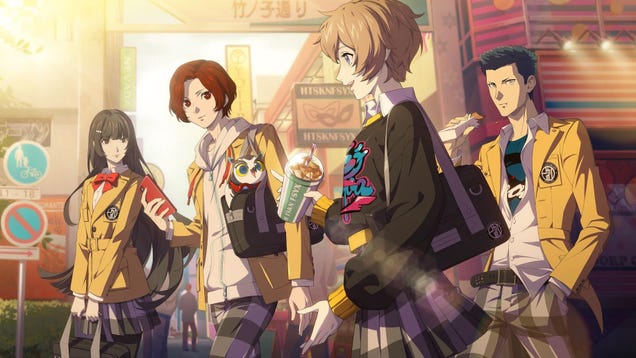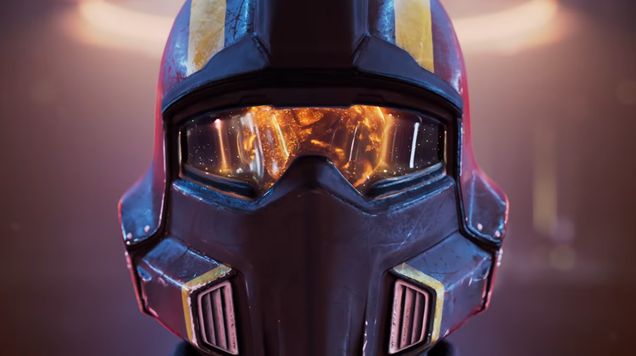
While a Transformers crossover is just around the corner, Magic: The Gathering’s most recent Universes Beyond collaboration is a set of four Commander decks themed around Warhammer 40,000.
We got to open up all four of these fancy new decks to show off exactly what’s in each box, including brand new art in the Warhammer 40,000 universe for every single card, which you can watch in the video above. We also spoke to Ethan Fleischer, Senior Game Designer at Wizards of the Coast, about the design of the decks, if they were intended to be played against each other, and if their shiny, all-foil Collector’s Editions are the new normal.
“We wanted to open the doors of Magic’s gameplay to a new audience: Warhammer players,” Fleischer tells me, saying that was a key reason for putting themed art on every card. Fleischer also explains that early designs for the cards “explored mechanics that reflected the types of weapons wielded by the armies of Warhammer 40,000 that we don’t normally see in Magic’s more traditional fantasy settings,” but that this idea was ultimately dropped in favor of focusing on the factions instead.
One common sentiment I’ve seen around these decks is players planning to leave them entirely unaltered in order to play them in a group against each other, leaving the consistent art of the decks intact. I asked if that was actively accounted for in design, and Fleischer tells me that they while always test new preconstructed decks against one another, this time they “took extra care to make sure that the decks were fun to play and were balanced against each other” in anticipation of just that.
The special Collector’s Editions have also been a hot topic – from their shiny new “Surge Foil” treatments, to them immediately selling out most places before release, to unfortunate reports that some are showing up slightly bent in their packaging. While he couldn’t speak to that last point, Fleischer says we could see more precons with editions like this in the future, but that “the audience’s response will determine whether Collector’s Editions become a mere experimental data point for Wizards of the Coast, or the new business-as-usual.”
You can watch our unboxing in the video above, and read on for the full interview.
IGN: Each deck has 42 brand new cards, was designing precons with that many exciting or intimidating? Did you have to limit yourselves at all since you could theoretically just create anything a deck was missing, or did you lean into that freedom?
Ethan Fleischer, Senior Game Designer: We used most our 168 new card design “slots” to best express the core of Warhammer 40,000’s intellectual property, which are the amazing miniatures made for the tabletop wargame. These correspond to Magic’s creature cards in a very satisfying way. We used some of our 216 reprint “slots” for concepts that aren’t so core to Warhammer 40,000’s IP, such as lands, but also for cards that suggested cool reimaginings in the grimdark future. My favorite of these has to be Swords to Plowshares, which shows a futuristic tank that’s been converted into a farm tractor.
The ability to make so many new cards allowed us to build a whole new deck archetype from the ground up with the Necron Dynasties deck. A mono-black artifact recursion deck? This was practically without precedent for Magic!
Was there card design space you felt you could explore for the first time now that you had futuristic weaponry and sci-fi tropes to play with?
Early in the design process, we explored mechanics that reflected the types of weapons wielded by the armies of Warhammer 40,000 that we don’t normally see in Magic’s more traditional fantasy settings. None of these mechanics provided enough novelty to justify the amount of space they would take up on so many of our new cards. Ultimately, we decided to focus on mechanics that reflected the identities of each of the factions represented in each deck, and to express the concept of each type of creature as well as we could using conventional Magic mechanics, relying on Warhammer 40,000’s rich and deep worldbuilding to stimulate excitement in our players.
How important was making every card with Warhammer 40,000 art (including basic lands) to your goals with these decks? Was it something you knew you were going to do from the very beginning?
Having art depicting the war-torn galaxy of Warhammer 40,000 was an established goal from the earliest stages of design. We wanted to open the doors of Magic’s gameplay to a new audience: Warhammer players. To do that, the cards needed to be firmly and consistently rooted in the setting, so there was no question that we understood and appreciated Warhammer. For our longtime players, the look and feel of the cards provided an aesthetically consistent experience that we’d never offered in a Commander preconstructed deck before.
Are the all-foil Collector’s Editions a bit of an experiment, or is that something you are already planning to do more of going forward?
I see the Collector’s Editions as an extension of other recent innovations such as Booster Fun and Secret Lair Drops. Many of our players are motivated to collect, to customize their decks, and express themselves through their choices of which version of a card to play. Ultimately, the audience’s response will determine whether Collector’s Editions become a mere experimental data point for Wizards of the Coast, or the new business-as-usual.
I know lots of people are planning to leave the decks entirely as is and play them in a pod against each other, was that an intent behind them? Did you try to balance them against one another for that?
Our usual playtesting procedure involves playtesting the decks in a given release against each other. Due to the Warhammer 40,000 decks’ thematic cohesion, we anticipated that more players than usual would want to keep these decks intact rather than breaking them up and moving the constituent cards into different decks. As a result, we took extra care to make sure that the decks were fun to play and were balanced against each other.
Do you have a favorite combo or synergy in one of the decks that people should know about?
While the Ruinous Powers deck is fundamentally chaotic, clever players can find ways to subvert that theme. For example, you could attack with Aspiring Champion and use Brainstorm to put a powerful Demon like Lord of Change on top of your library, ensuring that Aspiring Champion will become exactly what you intend and provide the most powerful result. Watch out though! The Necron player has tools at their disposal to mill the top cards of your library into your graveyard and may thwart your carefully laid plans!








